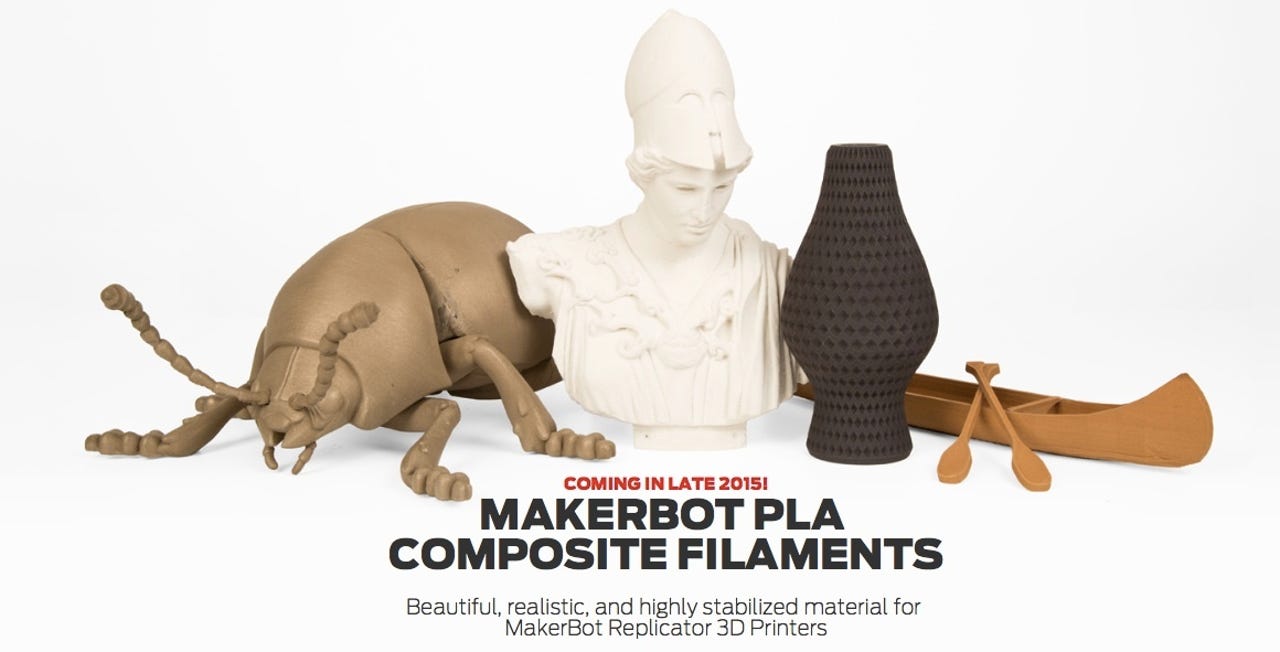CES 2015: MakerBot unleashes new materials, software, and services to power 3D builders


MakerBot, the most popular consumer 3D printer company, made 3D printed products a novelty in 2014. Using colorful ABS and PLA plastics filament, the desktop printers spit out thousands of toys, action figures, and random objects for makers around the world.
This year, they're actually making the technology useful. At CES on Tuesday, MakerBot announced new PLA composite filaments made with wood, metal, and stone, which will work with fifth-generation MakerBot Replicator printers. To accompany the new materials, the company also released their Smart Extruder, which can be swapped out easily to print with the variety of materials.
"CES 2015 is different for us in that we are purposefully not introducing new 3D printers at CES this year. Instead, we are focusing our efforts on creating the most comprehensive MakerBot 3D ecosystem to support our customers," said Jenny Lawton, CEO of MakerBot, in a press release.
To kick off the first official day of CES, the company also announced several new services. MakerBot 3D Professional Services will offer consulting, education, design services, 3D printed products and software applications to companies, organizations and schools interested in integrating the technology into their curriculum. MakerBot experts will be available for these services.
In early 2015, MakerBot will launch Mobile True Remote Printing and Monitoring, which allows full control and monitoring of 3D printing on a Replicator from anywhere via a Wi-Fi or cell network. They will also launch the MakerBot Kit for MODO 801, a new 3D workflow system designed in collaboration with The Foundry, a software company. It will take advantage of MakerBot's open API to fully integrate with Thingiverse, MakerBot's open source design community so that 3D designs can be made on MODO 801 and uploaded easily to the site.
Stratasys, a leader in professional 3D printing, acquired Brooklyn-based MakerBot in 2013. Last year, MakerBot made several announcements to start bringing 3D printing to the masses. In 2014, the company started selling its 3D printers in certain Home Depot stores in the US, announced the release of the $1375 MakerBot Mini (its cheapest model yet), and started opening Innovation Centers, complete with scanners and printers, in several universities to promote digital design courses. MakerBot Replicator 3D Printers and the MakerBot Digitizer Desktop 3D Scanners are now available in more than 500 retail stores throughout the US and Europe.
The company's booth at CES showed off ways various organizations are integrating 3D printing into their lifestyles. One example is General Electric's FirstBuild, a microfactory located on the University of Louisville's campus in Louisville, Kentucky that uses 3D printing to transform traditional design and manufacturing processes.
"We know there is a lot of hype around 3D printing," Lawton said in the statement. "At CES, we want to ground the hype and showcase how educators, businesses and real users have incorporated MakerBot 3D printing into their daily work and lives."